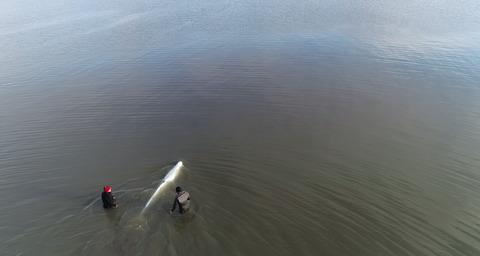Functional Ecology ( IF 4.6 ) Pub Date : 2022-09-05 , DOI: 10.1111/1365-2435.14172 Luke Storrie 1, 2 , Nigel E. Hussey 3 , Shannon A. MacPhee 2 , Greg O'Corry‐Crowe 4 , John Iacozza 1 , David G. Barber 1 , Lisa L. Loseto 1, 2

|
1 INTRODUCTION
Diel cycles in behaviour have evolved throughout the animal kingdom in response to predictable daily changes in light and temperature and represent a fundamental behavioural type that structures food web interactions. Partitioning behavioural modes between day and night enables organisms to balance activity with thermoregulation, avoid predators, exploit niches, and limit competition (Bennie et al., 2014). In marine ecosystems, diel behaviour centres around the diel vertical migration (DVM) of zooplankton, which typically descend deeper during the day to avoid visual predators and ascend at night to feed on productive surface waters (Hays 2003). The multilayered and highly interactive structure of marine food webs complicate this general trend, with the vertical behaviour employed at each trophic level driven by the presence of predators, coined ‘landscape of fear’ (Urmy & Benoit-Bird 2021). Furthermore, the vertical migration strategies of prey can vary depending on whether their dominant predator uses visual or nonvisual cues to target prey (Ohman 1990), which can lead to exploitation by other predators with greater visual acuity or nonvisual means of targeting prey over a diel cycle.
Marine predators exhibit diel patterns in depth occupancy closely associated with diel changes in insolation, directly linked to foraging and/or thermal physiology (Friedlaender et al. 2013, Papastimatiou et al. 2015). Strategies vary among air-breathing vs. water-breathing, endothermic vs. ectothermic, and visual vs. echolocating predators. But fundamentally, diel behaviour enables foraging to occur when and where prey forms aggregations (Vedor et al., 2021), are energetically cheaper to reach (air-breathing predators) (Friedlaender et al., 2013) or easier to see (visual predators) (Regular et al. 2011), while also balancing the need to maintain a thermal optimum (ectothermic predators) (Papastamatiou et al., 2015). Diel behaviour can further be influenced by competition (Castellote et al., 2015), environmental features (Campagna et al., 2007) and the presence of predators (Baird et al., 2008). While numerous experimental studies have explored the drivers of DVM in zooplankton (Bandara et al., 2021), our understanding of diel behavioural patterns in marine predators has primarily been based on observing differences in dive depth and frequency between day and night in systems where light regimes are relatively constant; determining whether marine predators respond to a switch from 24-h irradiance or darkness to a day/night cycle in light is yet to be formally investigated.
Regions north of the Arctic circle (66.5°N) experience extreme light regimes, with periods of 24-h darkness (polar night), 24-h daylight (midnight sun) and progressive daily light/dark cycles during spring and fall. These unique seasonal light cycles allow testing of hypotheses on organisms' behavioural and physiological responses to diel and seasonal changes in light and temperature (e.g. Grémillet, Kuntz, Woakes, et al., 2005, Grémillet, Kuntz, Gilbert, et al., 2005). Belugas from the Eastern Beaufort Sea (EBS) population represent a highly mobile, endothermic marine predator that experiences all seasonal light regimes, and hence function as a model predator under natural experimental conditions to examine the occurrence and intensity of diel behaviour and the interacting factors that shape its prevalence and form. Furthermore, given belugas target prey throughout the water column (to 1400 m, Storrie et al., 2022), dive depths can inform on DVM and habitat use in lower trophic level species (e.g. Arranz et al., 2011). Here, we examine time series depth data from satellite-tagged belugas from the EBS population to test the hypothesis that a mobile, endothermic marine predator initiates diel dive behaviour with the onset of the day/night cycles in light and ceases diel behaviour during 24-h daylight or darkness. We then examine the interacting factors associated with DVM; sea ice concentration, seafloor depth and water column structure, to tease apart light regime vs. other environmental factors driving diel behaviour in a marine predator.
中文翻译:

实证检验光照状态对海洋捕食者昼夜活动模式的影响揭示了影响行为的复杂相互作用因素
1 简介
行为的昼夜循环已经在整个动物王国中进化,以响应可预测的日光和温度变化,并代表了构建食物网相互作用的基本行为类型。在白天和黑夜之间划分行为模式使生物体能够平衡活动与体温调节、避免捕食者、利用生态位和限制竞争(Bennie 等人, 2014 年)。在海洋生态系统中,浮游动物的昼夜垂直迁移 (DVM) 的行为以浮游动物的昼夜垂直迁移 (DVM) 为中心,它们通常在白天下降得更深,以避开视觉捕食者,并在夜间上升以捕食富有成效的地表水 (Hays 2003)。海洋食物网的多层和高度互动的结构使这一总体趋势复杂化,在每个营养级采用的垂直行为是由捕食者的存在驱动的,创造了“恐惧景观”(Urmy & Benoit-Bird 2021)。此外,猎物的垂直迁移策略可能会有所不同,具体取决于它们的主要捕食者是使用视觉线索还是非视觉线索来瞄准猎物(Ohman 1990),这可能导致其他具有更高视力的掠食者或非视觉手段将猎物瞄准猎物而不是猎物。循环。
海洋捕食者表现出与日照变化密切相关的深度占用模式,与觅食和/或热生理学直接相关(Friedlaender et al. 2013 , Papastimatiou et al. 2015)。策略在空气呼吸与水呼吸、吸热与放热以及视觉与回声定位捕食者之间有所不同。但从根本上说,夜莺行为使觅食能够在猎物形成聚集体的时间和地点发生(Vedor 等人, 2021 年),在能量上更便宜(呼吸空气的捕食者)(Friedlaender 等人, 2013 年)或更容易看到(视觉捕食者) ) (Regular et al. 2011),同时还平衡了维持热最佳状态(等温捕食者)的需要(Papastamatiou 等人, 2015 年)。Diel 行为可能进一步受到竞争(Castellote 等人, 2015 年)、环境特征(Campagna 等人, 2007 年)和捕食者的存在(Baird 等人, 2008 年)的影响。虽然许多实验研究已经探索了浮游动物中 DVM 的驱动因素(Bandara 等人, 2021),我们对海洋捕食者昼夜动物行为模式的理解主要是基于在光照条件相对恒定的系统中观察昼夜潜水深度和频率的差异;确定海洋捕食者是否会对从 24 小时辐照度或黑暗到光照下的昼/夜循环的转变作出反应还有待正式调查。
北极圈以北的地区(66.5°N)经历极端光照状态,在春季和秋季有 24 小时黑暗(极夜)、24 小时日光(午夜太阳)和渐进的每日光照/黑暗周期。这些独特的季节性光照周期允许测试关于生物体对昼夜和光照和温度的季节性变化的行为和生理反应的假设(例如 Grémillet、Kuntz、Woakes 等人, 2005 年,Grémillet、Kuntz、Gilbert 等人, 2005 年))。来自东波弗特海 (EBS) 种群的白鲸代表了一种高度移动、吸热的海洋捕食者,它经历了所有季节性光照条件,因此在自然实验条件下作为模型捕食者来检查昼夜行为的发生和强度以及相互作用的因素塑造它的流行和形式。此外,鉴于白鲸在整个水柱(至 1400 m,Storrie 等人, 2022 年)的目标猎物,潜水深度可以告知 DVM 和低营养级物种的栖息地使用情况(例如 Arranz 等人, 2011 年))。在这里,我们检查来自 EBS 种群的卫星标记白鲸的时间序列深度数据,以检验这样一个假设,即一个移动的、吸热的海洋捕食者在光照下的昼夜循环开始时开始昼夜潜水行为,并在 24- h 白天或黑暗。然后我们检查与 DVM 相关的相互作用因素;海冰浓度、海底深度和水柱结构,以区分光照状态与其他环境因素,从而驱动海洋捕食者的昼夜节律行为。











































 京公网安备 11010802027423号
京公网安备 11010802027423号